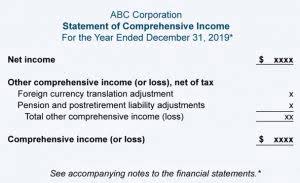Content
During the year, you bought a machine (7-year property) for $4,000, office furniture (7-year property) for $1,000, and a computer (5-year property) for $5,000. You placed the machine in service in January, the furniture in September, and the computer in October. You do not elect a section 179 deduction and none of these items is qualified property for purposes of claiming a special depreciation allowance. Under MACRS, averaging conventions establish when the recovery period begins and ends.

You must use the applicable convention in the year you place the property in service and the year you dispose of the property. The following table shows the declining balance rate for each property class and the first year for which the straight line method gives an equal or greater deduction. If you dispose of residential rental or nonresidential real property, figure your depreciation deduction for the year of the disposition by multiplying a full year of depreciation by a fraction. The numerator of the fraction is the number of months (including partial months) in the year that the property is considered in service.
Do you own a business?
A mere passive investor in a trade or business does not actively conduct the trade or business. The fastest way to receive a tax refund is to file electronically and choose direct deposit, which securely and electronically transfers your refund directly into your financial account. Direct deposit also avoids the possibility that your check could be lost, stolen, destroyed, or returned undeliverable to the IRS. Eight in 10 taxpayers use direct deposit to receive their refunds.
- If Maple buys cars at wholesale prices, leases them for a short time, and then sells them at retail prices or in sales in which a dealer’s profit is intended, the cars are treated as inventory and are not depreciable property.
- The company expenses another $4,000 next year and another $4,000 the year after that, and so on until the asset reaches its $10,000 salvage value in 10 years.
- For purposes of determining the total amount of S corporation items, treat deductions and losses as negative income.
- To make it easier to figure MACRS depreciation, you can group separate properties into one or more general asset accounts (GAAs).
- With this cancellation, the copier’s annual depreciation expense would be $1320.
After all, the purchase price or initial cost of the asset will determine how much is depreciated each year. When an asset is sold, debit cash for the amount received and credit the asset account for its original cost. Debit the difference between the two to accumulated depreciation. Under the composite method, no definition of straight line depreciation gain or loss is recognized on the sale of an asset. Theoretically, this makes sense because the gains and losses from assets sold before and after the composite life will average themselves out. The depreciation per unit is the depreciable base divided by the number of units produced over the life of the asset.
Sum-of-years-digits method
This was the only item of property you placed in service last year. The property cost $39,000 and you elected a $24,000 section 179 deduction. You also made an election under section 168(k)(7) not to deduct the special depreciation allowance for 7-year property placed in service last year. Because you did not place any property in service in the last 3 months of your tax year, you used the half-year convention.
- It is an allowance for the wear and tear, deterioration, or obsolescence of the property.
- For more information, see section 167(g) of the Internal Revenue Code.
- Canada Revenue Agency specifies numerous classes based on the type of property and how it is used.
- Use the Depreciation Worksheet for Passenger Automobiles in chapter 5..
- For each GAA, record the depreciation allowance in a separate depreciation reserve account.
For example, if you lease only one passenger automobile during a tax year, you are not regularly engaged in the business of leasing automobiles. An employer who allows an employee to use the employer’s property for personal purposes and charges the employee for the use is not regularly engaged in the business of leasing the property used by the employee. To figure depreciation on passenger automobiles in a GAA, apply the deduction limits discussed in chapter 5 under Do the Passenger Automobile Limits Apply. Multiply the amount determined using these limits by the number of automobiles originally included in the account, reduced by the total number of automobiles removed from the GAA, as discussed under Terminating GAA Treatment, later. Instead of using the above rules, you can elect, for depreciation purposes, to treat the adjusted basis of the exchanged or involuntarily converted property as if disposed of at the time of the exchange or involuntary conversion. Treat the carryover basis and excess basis, if any, for the acquired property as if placed in service the later of the date you acquired it or the time of the disposition of the exchanged or involuntarily converted property.



































